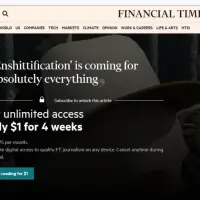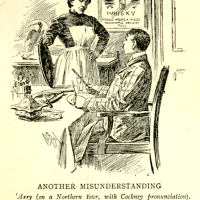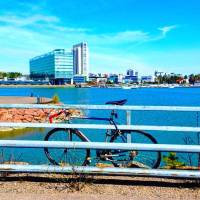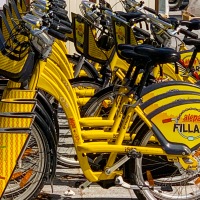 I am pleased to announce that I am part of a team delivering a course at Signum University this fall on Ursula K. Le Guin: Worldbuilder. Prof. Kris Swank, PhD candidate at the University of Glasgow, is delivering a series of lectures on Le Guin, taking an approach to the eclectic Le Guin that is understudied. Le Guin was a “world-builder”–a shaper of speculative universes that are as dynamic, alluring, and provocative as her characters, storylines, and poetic prose have always been. She is the focus of much of my leisure reading in 2021–and well worth the time.
I am pleased to announce that I am part of a team delivering a course at Signum University this fall on Ursula K. Le Guin: Worldbuilder. Prof. Kris Swank, PhD candidate at the University of Glasgow, is delivering a series of lectures on Le Guin, taking an approach to the eclectic Le Guin that is understudied. Le Guin was a “world-builder”–a shaper of speculative universes that are as dynamic, alluring, and provocative as her characters, storylines, and poetic prose have always been. She is the focus of much of my leisure reading in 2021–and well worth the time.
I continue to be fascinated by Le Guin’s work, having been drawn in to the fantasy Earthsea series as a child and young adult. This summer, I am part of a mini reading group on the science fictional Hainish Cycle and continue to be stimulated by her writing. So it is a pleasure to be a “preceptor” for the upcoming class–someone who will sit with students, listening to the lectures and then leading the weekly book discussions.
It also seems that Le Guin, though only recently having passed away, is in somewhat of an ascendency. Mythlore has recently released a full special issue dedicated to Le Guin (see the free articles here), and the US Postal Service is honouring Le Guin with a stamp.
We are delighted to announce that the 33rd stamp in the US Postal Service Literary Arts series honors Ursula. Stamp release will be later this year, date TBD. From then on, all our letters will be three ounces! Thank you @USPS for this distinction. https://t.co/H0jw1KmhUb pic.twitter.com/NA8Yz7I7fl
— Ursula K. Le Guin (@ursulaleguin) January 15, 2021
If you would like to delve further into Le Guin’s worlds, I hope you can join us this fall. Registration for credit, discussion audit, and audit is open now for this masters-level course. Beyond this groundbreaking Le Guin course, other Signum courses this autumn include:
- “Beowulf in Old English” (which I really want to take … when I learn Old English)
- “The Life and Times of the English Epic“
- @TolkienProf Corey Olsen’s famous course, “The Story of the Hobbit“
And there are future courses in development on Arthurian literature by Gabriel Schenk, Old Saxon (language), Amy Sturgis’ two-part Science Fiction foundational courses, Verlyn Flieger’s “Tolkien’s World of Middle-earth,” Germanic Myths and Legends, and a new digital humanities course by Tolkienist James Tauber. You can always send me a personal note if you are wondering if an MA in Imaginative Literature is the right thing for you (my @signumu.org email address is brenton.dickieson). Meanwhile, here’s the full course description, schedule, and links to readings.
 Ursula K. Le Guin: Worldbuilder
Ursula K. Le Guin: Worldbuilder
Ursula K. Le Guin (1929-2018) described herself as “A Citizen of Mondath,” that country of the imagination where live the storytellers, the mythmakers, and the singers. In this survey of her works, we will study Le Guin’s own use of story, myth, and song to build unique worlds at the heart of her fiction: the far-flung Hainish Universe, the intimate islands of Earthsea, the disparate states of the Western Shore, and others. We will examine her literary theories of science fiction and fantasy as vehicles for myth, archetype, and character, and as locations for the exploration of gender, politics, the environment, race, culture, religion, and power. Finally, we will examine how her views evolved over time as she revisited and re-visioned the worlds she had built, and how her legacy empowers other authors to build worlds of their own.
Weekly Schedule
This course includes two live 90-minute lectures per week with one 60-minute discussion session as assigned.
 Course Schedule
Course Schedule
- Le Guin’s biography
- Early world-building
Week 2: The Hainish Cycle I: Beginnings
- “Myth and Archetype in Science Fiction”
- The early Hainish Cycle writings
 Week 3: The Hainish Cycle II: Gender
Week 3: The Hainish Cycle II: Gender
- The Left Hand of Darkness
- Gender revisited
Week 4: The Hainish Cycle III: Politics
- The Dispossessed
- Politics in Le Guin’s writings
Week 5: The Hainish Cycle IV: The Environment
- The environment in Le Guin’s writings
- The Word for World is Forest
- Le Guin and the New Wave Science Fiction
- The Lathe of Heaven
Week 7: The Books of Earthsea I: Power
- The early Earthsea writings
- A Wizard of Earthsea
Week 8: The Books of Earthsea II: Race and Culture
- Race & culture in Le Guin’s writings
- The Tombs of Atuan
 Week 9: The Books of Earthsea III: Religion
Week 9: The Books of Earthsea III: Religion
- Religion in Le Guin’s writings
- The Farthest Shore
Week 10: The Books of Earthsea IV: Feminism
- Tehanu
- Feminism in Le Guin’s writings
Week 11: The Books of Earthsea V: Later Re-visions
- The Other Wind
- Tales from Earthsea
- Late world-building, and the Annals of the Western Shore series
- “Omelas” and Le Guin’s literary legacy
Required Texts
Note: Students may use any edition of the following texts.
- Required Texts:
- The Hainish Cycle
- The Left Hand of Darkness (1969)
- The Dispossessed (1969)
- The Word for World is Forest (1972)
- The Lathe of Heaven (1971)
- The Books of Earthsea
- A Wizard of Earthsea (1968)
- The Tombs of Atuan (1971)
- The Farthest Shore (1972)
- Tehanu (1990)
- Tales from Earthsea (short stories, 2001)
- The Other Wind (2001)
- Powers (Annals of the Western Shore Book 3) (2007)
- The Wind’s Twelve Quarters (1975)
- The Hainish Cycle
- Optional Texts (not required):
- Gifts (Annals of the Western Shore Book 1) (2004)
- The Worlds of Urusla K. Le Guin (film, 2018)
- Suggested Edition:
- Single-volume Library of America edition of Annals of the Western Shore (includes Gifts, Voices, and Powers)
Further readings will be provided by the course instructors in the final syllabus.
 Special Note: Robert Steed, PhD, Professor of Humanities at Hawkeye Community College, will give a special guest lecture during Week 9 of this course. Steed specializes in the study of Chinese religions, particularly Daoism, and Asian religions more generally. His research and teaching interests extend to religion and popular culture, medieval and world Christianity, mysticism, religion and art, and mythopoeic art, especially that of J.R.R. Tolkien, Ursula K. Le Guin, and Miyazaki Hayao.
Special Note: Robert Steed, PhD, Professor of Humanities at Hawkeye Community College, will give a special guest lecture during Week 9 of this course. Steed specializes in the study of Chinese religions, particularly Daoism, and Asian religions more generally. His research and teaching interests extend to religion and popular culture, medieval and world Christianity, mysticism, religion and art, and mythopoeic art, especially that of J.R.R. Tolkien, Ursula K. Le Guin, and Miyazaki Hayao.

























One small comment regarding Le Guin. I had read the first three “Earthsea” novels several times as a young adult, when I suddenly realised in “The Tombs of Atuan”, that Ged has black skin. Unthinkingly I had imagined him a Caucasian in appearance. As I recall, the skin colours of different peoples in Earthsea are mentioned occasionally, and in “The Tombs of Atuan” once, very briefly, so it is, it seems to me in hindsight, to be something that some readers will overlook. I am not sure how different illustrators or animators have treated this.
Hi John, yes, you are right. I don’t know if I remembered that point as a child. The only black people I had met then at the time I read book #1 were from Africa, and I have never been good at fully visualizing a character–though Le Guin’s books make me realize I do visualize aspects of gender, like gait and movement. But yes, Earthsea has been “whitewashed” and it annoyed Le Guin: https://geekoutsider.com/2014/09/05/remember-this-ursula-k-le-guins-badass-response-to-the-whitewashing-of-syfys-earthsea-adaptation/
Pingback: “Ursula K. Le Guin: Worldbuilder” Signum University Course (and a peek at the fall catalogue) – Glyn Hnutu-healh: History, Alchemy, and Me
Pingback: Three Myths Retold: Madeline Miller’s Song of Achilles, Margaret Atwood’s Penelopiad, and C.S. Lewis’ Till We Have Faces | A Pilgrim in Narnia
Pingback: Thesis Theater: Maximilian Hart, “Draconic Diction: Truth and Lies in Le Guin’s Old Speech” (Mon, Aug 16, 6pm Eastern) | A Pilgrim in Narnia
Pingback: John Garth, Maximilian Hart, Kris Swank, and Myself on Ursula K. Le Guin, Language, Tolkien, and World-building (Friday Feature) | A Pilgrim in Narnia
Pingback: Ursula K. Le Guin’s Manifesto Against Genre Snobbery | A Pilgrim in Narnia
Pingback: A Garden Gate Summer Note on Teaching and the First Days of School | A Pilgrim in Narnia